Hasta finales del siglo XIX nadie dudaba de que el Apóstol Santiago el Mayor estaba enterrado en el sepulcro hallado en los montes de Iria Flavia. Pero tras la reaparición en 1878 del sepulcro oculto a finales del siglo XVI, se abrió un debate sobre la identidad de los restos hallados. Dos son las posturas antagónicas sobre esta cuestión: Un sector asegura que la tumba contiene las reliquias del apóstol Santiago y el otro defiende que pertenecen al Obispo Prisciliano.
En cuanto a la primera teoría, el Papa León XIII encarga el estudio de los restos a una Comisión para la Fe, y resuelve el 25 de julio de 1884 que los huesos pertenecen al Apóstol. Un siglo después, en 1988, el filólogo D. Isidoro Millán González-Pardo y el arqueólogo D. Antonio Blanco Freijeiro, miembros ambos de la Real Academia de la Historia, encuentran una inscripción de finales del siglo I o inicios del siglo II en la que figuran las palabrasmartyr y Athanasio grabadas en una piedra del mausoleo del Apóstol. La investigación más reciente es llevada a cabo por D. Enrique Alarcón Moreno, catedrático de Metafísica de la Universidad de Navarra, que halla en el sepulcro del Apóstol una inscripción del siglo I que contiene el nombre judío de Jacob, es decir, Santiago. Por último, la declaración que hace la UNESCO en 1993 declarando el Camino de Santiago como Patrimonio Cultural de la Humanidad viene a apoyar indirectamente la tesis mantenida por los autores anteriores.
Respecto a la segunda postura, el anglicano teólogo Henry Chadwick sostiene en 1976 que el enterrado en la tumba es Prisciliano. Fue éste un obispo gallego que defendió ardorosamente la vivencia de la pobreza y austeridad de la Iglesia y el ejercicio sacerdotal de las mujeres. Tuvo por eso extraordinario seguimiento en Galicia, llegando el priscilianismo a ser una creencia popular arraigada. Murió acusado de hereje y decapitado en el año 385 en Treveris, Alemania, en un juicio promovido por la propia Iglesia. Según Chadwick, Galicia solo fue cristianizada por las ideas ascéticas de Prisciliano, lo que provocó que sus discípulos lo trasladaran una vez degollado y lo enterraran en la tumba en cuestión. Esta idea fue refrendada por la investigadora norteamericana Tracy Saunders. De la misma opinión son Claudio Sánchez Albornoz, Fernando Sánchez Dragó o Ramón Chao. Sin embargo, el medievalista Francisco Javier Fernández Conde, experto estudioso de Prisciliano, guarda el más discreto silencio sobre el devenir de la tumba.
Corresponde, ahora, aunque prematuramente, contar el caso de la simbología del Camino. No obstante, me detengo aquí porque el viento trae hasta mí los acordes delicados de un violín que suena cada vez más cerca.
Publicado por jmfanjuldiaz

Publicado por
Unknown
,
9:29
You might be (or not be) familiar with “The game of the Goose”. It is a well-known game among people in Europe, and it has been played for Centuries. The game, consists of a board. On it, there is a spiral-shaped track divided by around 63 numbered spaces. The game is very simple. Basically, the players have to role the dice and move their piece forward. Each space, has an image on it, depending on where the piece falls, there might be some rules to follow (role your dice again, go back to the start,advance a specific number of spaces…) It is called “The game of the goose” because many of the spaces on the track have a goose on it. If your piece falls on one of these spaces, then it means that you can role your dice again.
There are different theories that try to explain the origin of the famous “Game of the Goose”. One of these theories states that, the game was created by the Templars, and it would not only be a game but also a secret or encrypted guide to the Way of St. James (Camino de Santiago). Each numbered space would represent a stage of the Camino. What makes it more exciting is that, hidden messages would be not only on the board but also on the monuments along the way.
And why or how did they come up with this theory?
Formerly, geese were house guardians by warning their owners of the presence of intruders. Also,
gueese were considered as sacred guides, sent to advise humanity.
Wild geese have their seasonal and stable migration routes, and they have defined the known “
Way of the gueese“. This way matches with The Camino de Santiago (Way of Saint-James) and “The Way of the Stars”.
It is believed that because pilgrims didn’t have maps, they used to follow natural indications to make their way to Santiago de Compostela.
For this reason, it would make sense that pilgrims followed “The geese route” during the day and were guided by the stars at night to get to Santiago de Compostela.
Along the way, it is common to find the symbol of “the leg of the goose”.

According to Carlos Sanchez-Montaña, specialist in Romanesque architecture, the board is a map, what today we can understand as a travel guide. This guide leads us through the ancient “Callis lanus”.
The “Callis lanus” route between Cabo de Creus and Touriñan, was divided in 63 stages (15 Miles each), that correspond the 63 stages of “The game of the Geese”. Because of the christianization and transformation of the way, people who knew the original way decided to preserv it in the form of a board-game.
To make sure that pilgrims would get to Santiago safe, the creators of the game included a number of dangers on it, that according to Sanchez – Montaña,
corresponded with real difficult places along the way, some of them located in Castilla y Leon.
Posted by joanta in Passion Beyond Tradition

Publicado por
Unknown
,
9:28
Antonio Machado
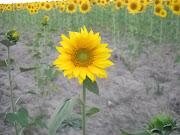 Muy cerca está, romero, la tierra verde y santa y florida de tus sueños; muy cerca, peregrino que desdeñas la sombra del sendero y el agua del mesón en tu camino...
Muy cerca está, romero, la tierra verde y santa y florida de tus sueños; muy cerca, peregrino que desdeñas la sombra del sendero y el agua del mesón en tu camino...
Publicado por
Unknown
,
9:21
La pregunta surge de modo natural cuando se conoce que la identidad del cadáver hallado en la tumba no está suficientemente probada pues una parte defiende que es el apóstol Santiago el yacente, y otra el hereje Prisciliano. ¿Cambia el sentido del Camino? ¿Pierde el Camino la razón de ser, y por lo tanto, debería desaparecer o ser olvidado si no fuese el apóstol Santiago el inquilino del sepulcro?
Como aserto general debe afirmarse que a cada peregrino le asiste una razón propia para emprender la ruta hacia Compostela, le asiste su propia razón personal. Sin embargo, aún a sabiendas de que el reduccionismo puede alejarse de la verdad, podría sintetizarse el sentido del Camino en tres postulados: el lúdico, el religioso y el ascético. Una parte del peregrinaje considera la ruta como un trance cómodo para estar entretenido y alejarse por un tiempo de las preocupaciones cotidianas o laborales, esto es, disfrutar de unas vacaciones en un marco y contexto geográfico algo diferente al de sierra o playa sin dar al acto del peregrinaje ninguna otra transcendencia. Otros, convierten el caminar en un paso o tránsito que les conduce a la comprensión y aprehensión de Dios en cuanto que defienden prioritariamente una visión religiosa sobre cualquier otra. Es Santiago, el Apóstol de Jesús y, en consecuencia, buscan el mejor conocimiento de la doctrina predicada por Él o simplemente se dejan llevar por un sentimiento religioso. Y hay quienes encuentran que el Camino es un medio de búsqueda de sí mismo, el puente tendido para que el hombre tome pulso a su vida y salga reforzado y dispuesto a ser mejor de lo que fue individual y, sobre todo, colectivamente. No hay más trascendencia que la del hombre al servicio del hombre, olvidándose conscientemente de la dimensión sacra o religiosa. E incluso pudiera existir un cuarto modelo de caminante concebido como la síntesis de los tres anteriores, es decir, el sincrético peregrino religioso que busca en el divertimento necesario la perfección de su yo para catapultarse al mundo.
La respuesta deviene, pues, sin exagerados forzamientos. El Camino es en sí mismo un fin, un divertimento, un ideal de perfección o una búsqueda de Dios porque el otro final queda muy lejos para el buen caminante. Prediquemos pues un sano ecumenismo para el peregrinaje a Compostela como espejo de sana convivencia en que las sociedades del mundo deben mirarse para avanzar en el recto sentido.
publicado por jmfanjuldiaz

Publicado por
Unknown
,
9:19
Isabel de Lucerna
Su historia ejemplifica una de las muchas vicisitudes que padecieron antaño, los peregrinos a Santiago. En este caso se trata de la dramática desaparición de Isabel y su familia acaecida en 1738-39 en la ciudad gallega de Betanzos. Isabel de Lucerna, una peregrina que falleció antes de llegar a Santiago y que está en la puerta como un recuerdo de las vicisitudes que sufrían los caminantes.
La historia inmortal del camino se ha ido construyendo a lo largo de los tiempos, pero su origen, a pesar de las creencias populares, no comienza con en el descubrimiento del sepulcro de Santiago en Compostela, sino que su leyenda, se remonta siglos antes de la llegada de Jesús y de la comunidad cristiana, tiempos remotos dónde la ruta era conocida como El Camino de las Estrellas.
El camino de Santiago, concretamente el francés, pudo coincidir por tanto con un antiguo camino esotérico, una ruta celtibera mágica denominada Camino de las Estrellas o Camino de la Oca, un mapa escrito en cielo que nos guiaba en la noche de manera infalible hacia el “Finis Terrae”, para los antiguos Finisterre, el último rincón occidental del mundo y el lugar dónde comenzaba el país de los muertos.
Así mismo, la ruta reproduce en su recorrido una pequeña parte visible del brazo de la Vía Láctea, usada por antiguos y peregrinos para guiarse en su camino, y coincide perfectamente con el paralelo terrestre 42º N.
El paralelo 42 Norte aparte de ser uno de los círculos imaginarios perpendiculares al eje de la tierra, es considerado desde la antigüedad como uno de los paralelos más energéticos del globo terráqueo, aunando enclaves religiosos de importante relevancia como Santiago de Compostela, su camino Francés, la región de Roma, el desierto de Gobi, o los montes de Hélade entre otros, dónde según los tibetanos se haya el reino subterráneo de Agartha y la ciudad de Shambala. Es cierto que algunos investigadores incluyen en este paraleo el Monte Ararat, pero éste, auqnue próximo, se encuentra desplazado unos 330 km.
Teniendo en cuenta que las distancia entre los paralelos terrestres es de 111 km, permanecer en la misma estela del P-42 para un trayecto como el nuestro de 116 km (Sarria a Compostela) era fácil. Sin embargo si lo analizamos para el recorrirido de 888 km desde Roncesvalles a Finisterre la coincidencia ya puede dejar de ser casual.
Roncesvalles 43°01'00?N; Sarria 42°46'53?N; Portomarín 42°48'24?N; Palas de Rey 42°52'29?N; Arzúa 42°56'00?N; Santiago de Compostela 42°52'50?N; Fisterra 42°54'18?N
Estas primeras rutas ancestrales tuvieron ritos y costrumbres que con el paso del tiempo y a raíz de las primeras peregrinaciones cristianas a Compostela algunas fueron incorporándose al Camino. Tradiciones como el simbolismo de la concha, la purificación del alma, las estrellas, la pata de oca, el perro,o la loba entre otros, se dice que pasaron a formar parte de la tradición actual al no poder ser acalladas del arraigo de la ruta.....
Autor : Ivan Montoya
Publicado por
Unknown
,
3:58
Visión personal de una peregrina a su paso por Torres del Río ( Navarra)
Mary Aziz • hace 40 semanas:
I will walk the Camino! Torres del Rio, Santo Sepulcro, a Knights Templar Church


Publicado por
Unknown
,
3:49

Publicado por
Unknown
,
3:48
Juan Pablo II
Karol Wojtyla, nació en Wadowice (Polonia) el 18 de mayo de 1920. En 1982, con ocasión de su visita a España, y sobre todo en 1989, en la Jornada Mundial de la Juventud, Juan Pablo II, peregrinó a Santiago de Compostela y rezó ante el Sepulcro del Apóstol.
Publicado por
Unknown
,
3:45
Manantial en una sierra
No tienen las fuentes el empaque ni la obra de las iglesias, monasterios o puentes, ni siquiera pueden considerarse acaso construcciones civiles, pero no dejan de ser un elemento insustituible y preciado del Camino de Santiago. Se propagan afortunadamente por todos los lugares: ya en las oquedades de un barranco, o en las faldas bosquosas de una sierra quebrada, ya a la salida o entrada de las villas y pueblos, sobre un cerro agreste o bajo un pináculo de piedras, los manantiales brotan libres para aliviar la sed del peregrino. Se diría que son los hermanos pobres de las grandes obras, pero solo lo son en apariencia.
Tienen las fuentes un espíritu renovador o vivificador. El peregrino conoce el lugar donde mana el agua de la fuente y una vez allí repone fuerzas para seguir adelante hasta el fin de la etapa. Porque no solo el agua aporta las necesidades hídricas perdidas, sino que proporciona frescura y solaz como ninguna otra cosa. Además, poseen un don especial que favorece el desarrollo de la fuerza, el ánimo y las mejores disposiciones del caminante. No es banal que el ejercicio de los ideales más elevados del hombre- el amor, la verdad, la soledad, la sencillez, la humildad etc.- haya sido contextualizado literariamente en el marco del conocido como locus amoenus, un lugar bucólico en el que la fuente ocupa una situación privilegiada junto al bosque, el prado y las flores que lo cubren. Así Fray Luis de León reitera que una fontana pura destila agua que baja a los valles a fecundar el suelo que va esmaltándose de flores y verde hierba. Es curioso que el gran poeta del amor, San Juan de la Cruz, encerrado en la cárcel por envidias y fanáticos dogmas eclesiales, tenga en su imaginario la imagen de una fuente como primer motivo poético de donde arrancan los versos ya universales Que bien sé yo/ la fonte que mana y corre. En la negrura física y moral de su hábitat, solo la fuente es la esperanza. Y por último, se concluye que la fuente es también un halago a los sentidos, un roce delicado a la piel, al oído, a la inteligencia porque ya el escritor latino Horacio percibió que las fuentes murmuran e invitan al sueño,cantan en su discurrir hacia el río provocando con su melodía el deseado y reparador sueño del caminante. No es, pues, la fuente cualquier cosa inútil.
Muchos son los veneros que adornan la ruta jacobea. A modo de ejemplos representativos se destacan la Fuente de los Chorros en el barrio de S. Martín de Estella, del siglo XVI, maciza fuente circular de piedra, la peculiar del Moro en Villamayor de Monjardín, del año 1200, a la que se accede por un frontón de dos arcos apuntados y unos peldaños en cuyo lecho mana el líquido cristalino, la Fuente de los Peregrinos,situada en la Plaza de Santiago de Logroño, la Fuente de la Rueda, en el pueblo palentino de Boadilla, y ya en Santiago la Fuente de los Bueyes, porque se dice que allí se pararon las yuntas que trajeron al Apóstol a la ciudad compostelana. Y allí se quedó.
Fuente del Moro (Villamayor de Monjardín) ![moros-1024x768[1]](http://haciasantiagojmfanjul.files.wordpress.com/2014/04/moros-1024x7681.jpg?w=300&h=225)
No se deje de soñar en las fuentes. Recuérdese que buena parte de las mitologías de las culturas celtas ubican en ellas la aparición de seres fantásticos y maravillosos de los que las Xanas son un buen ejemplo.
publicado por jmfanjuldiaz

Que el Camino de Santiago es espejo de la vida resulta un hecho innegable. Los actos, las virtudes y vicios, repercuten obligatoriamente en ese pequeño mundo del camino compostelano. En este caminar se recogen en proporciones parecidas la modestia, la vanidad, la inteligencia, la torpeza, la sensibilidad, el egoísmo, la solidaridad, el trabajo, la pereza, el amor y el desamor. Es, pues, propósito presentar algunos datos curiosos sobre al amor y el sexo en el Camino Jacobeo porque, dígase lo que se diga, ambos elementos existen.
Téngase en cuenta que el Códice Calixtino insiste reiterada y obsesivamente en la lascivia de algunos pobladores de la península de los que hace una burlona caricatura. Pero avanza aún más en este campo cuando introduce el ejercicio de la prostitución e involucra, indirectamente, al peregrino como partícipe necesario de esa menesterosa actividad. El Libro I, capítulo XVII, del citado libro, dice en tono amenazante: Las criadas de los hospedajes del camino de Santiago que, por motivos vergonzosos y para ganar dinero por instigación del diablo se acercan al lecho de los peregrinos, son completamente dignas de condenación, y a continuación las nombra situándolas en lugares concretos y para las que se piden las penas más despiadadas, incluida la amputación : Las meretrices que, por estos motivos entre Puerto Marín y Palas del Rey , en lugares montuosos, suelen salir al encuentro de los peregrinos, no solo deben ser excomulgadas, sino que además deben ser despojadas, presas y avergonzadas, cortándoles las narices, exponiéndolas a la vergüenza pública. Solas suelen presentarse a solos. De cuántas maneras, hermanos, el demonio tiende sus malvadas redes y abre el antro de perdición a los peregrinos, me causa asco describirlo. Otros documentos más templados repiten el mismo suceso, como es un Reglamento consular de 1205 de Toulouse en el que se habla de profesionales que ofrecen sus servicios públicos al peregrino que no ha tenido contactos sexuales desde hace mucho tiempo. Un relato de un anónimo inglés de 1380 dice que las mujeres llevan sombreros con adornos que parecen mitras, visten mantos a rayas y muchas son de mala vida. El peregrino Jean de Tournai se escandalizaba en 1488 del ambiente de burdel que encuentra en las posadas del camino. Y en 1497 un cronista alemán comenta que muchos peregrinos regresaban de Santiago llevando con ellos la sífilis.
Actualmente, puede suceder algo parecido. Al margen del discreto ambiente prostibulario que pueda haber, no es extraño escuchar aventuras y andanzas sexuales de peregrinos e incluso confesiones de compañeros que relatan, tras un largo espacio de conversación e intimidad, algún que otro esporádico encuentro amoroso. Cierra este escueto comentario el siguiente anuncio recogido en un foro de peregrinos y que es objeto de comentario entre ellos: En Burgos capital, a apenas 50m.de la catedral, doy alojamiento a chicos y chicas con ganas de echar unos polvos en el camino. Anuncio serio, y ante todo buen rollito. Yo, 29 años.
Amor y sexo no dejan de ser una realidad más del Camino.

Publicado por
Unknown
,
10:49
Caminar significa “hacer el Camino”, una ruta perfectamente señalizada y trazada, en la que es muy difícil
perderse. Se trata de algo tan sencillo como seguir flechas amarillas. En otras palabras, se trata de dejarse llevar.
Para caminar no sólo hay que mirar el suelo, es preciso levantar la vista. El Camino es ocasión de contemplación, y hay que olvidar la prisa, hay que dejar tiempo para contemplar. En primer lugar contemplación de la naturaleza, algo a lo que el espesor de nuestra cultura científico-técnica contemporánea no nos tiene acostumbrados: casi siempre estamos en contacto con casas, coches, ciudades… con la obra del hombre. Pero la peregrinación nos pone en contacto con la grandiosidad de la creación: el cielo, las montañas, los ríos, los animales.
Aquí solo ante el Camino, paso tras paso, soy alguien, soy yo: un ser humano, con toda su pequeñez y toda su grandeza.
Publicado por
Unknown
,
10:43

Publicado por
Unknown
,
10:39
Alfonso II, el Casto
Rey de Asturias, entiéndase de la zona cristiana de la península ibérica (ya que el resto había sido conquistado por los musulmanes) durante cuya larga monarquía entre el 791 y el 842, tuvo lugar el descubrimiento de la tumba del Apóstol Santiago. Se le considera el primer peregrino con sangre real de la historia.
 Download Flechas Amarillas PC Screensaver (1.0 MB ZIP)
Download Flechas Amarillas PC Screensaver (1.0 MB ZIP) Download Camino 2003 PC Screensaver (0.9 MB ZIP)
Download Camino 2003 PC Screensaver (0.9 MB ZIP) Download Camino 2004 PC Screensaver (1.0 MB ZIP)
Download Camino 2004 PC Screensaver (1.0 MB ZIP) Download Padre José María PC Screensaver (0.8 MB ZIP)
Download Padre José María PC Screensaver (0.8 MB ZIP) Download ElCaminoSantiago PC Screensaver (22.0 MB ZIP)
Download ElCaminoSantiago PC Screensaver (22.0 MB ZIP) Download ElCaminoSantiago Webshots PC Screensaver (22.0 MB ZIP)
Download ElCaminoSantiago Webshots PC Screensaver (22.0 MB ZIP)



![]() The Road is Long and Lonely (MP3)
The Road is Long and Lonely (MP3)![]() The Road is Long and Lonely (WMA)
The Road is Long and Lonely (WMA)![]() Singin' in the Rain (MP3)
Singin' in the Rain (MP3)![]() Singin' in the Rain (WMA)
Singin' in the Rain (WMA)![]() Singin' in the Rain (PDF)
Singin' in the Rain (PDF)![]() Mad Dogs and Englishmen (MP3)
Mad Dogs and Englishmen (MP3)![]() Mad Dogs and Englishmen (PDF)
Mad Dogs and Englishmen (PDF)![]() Good Riddance (Time of Your Life) (MP3)
Good Riddance (Time of Your Life) (MP3)![]() Good Riddance (Time of Your Life) (WMA)
Good Riddance (Time of Your Life) (WMA)![]() Good Riddance (Time of Your Life) (PDF)
Good Riddance (Time of Your Life) (PDF)

![]() Download 'Spanish Alphabet & Grammar' PC software (3.6 MB ZIP)
Download 'Spanish Alphabet & Grammar' PC software (3.6 MB ZIP)![]() Download Before 'You Know It' multi-language PC software (93.4 MB ZIP)
Download Before 'You Know It' multi-language PC software (93.4 MB ZIP)![]() Download 'Five Language Dictionary' PC software (19.4 MB ZIP)
Download 'Five Language Dictionary' PC software (19.4 MB ZIP)![]() Download 'Multilingual Dictionary' PC software (26.0 MB ZIP)
Download 'Multilingual Dictionary' PC software (26.0 MB ZIP)![]() Download 'The Word': A multi-language Bible PC software (30.2 MB ZIP)
Download 'The Word': A multi-language Bible PC software (30.2 MB ZIP)![]() Download Spanish language course: Four WMA audio disks for PC and Zune (79.0 MB ZIP)
Download Spanish language course: Four WMA audio disks for PC and Zune (79.0 MB ZIP)![]() Download French language course: Four WMA audio disks for PC and Zune (77.0 MB ZIP)
Download French language course: Four WMA audio disks for PC and Zune (77.0 MB ZIP)![]() Download German language course: Four WMA audio disks for PC and Zune (83.2 MB ZIP)
Download German language course: Four WMA audio disks for PC and Zune (83.2 MB ZIP)![]() Download Italian language course: Four WMA audio disks for PC and Zune (54.0 MB ZIP)
Download Italian language course: Four WMA audio disks for PC and Zune (54.0 MB ZIP)![]() Download Spanish language course: Four M4A audio disks for Mac and iPod (78.2 MB ZIP)
Download Spanish language course: Four M4A audio disks for Mac and iPod (78.2 MB ZIP)![]() Download French language course: Four M4A audio disks for Mac and iPod (80.5 MB ZIP)
Download French language course: Four M4A audio disks for Mac and iPod (80.5 MB ZIP)![]() Download German language course: Four M4A audio disks for Mac and iPod (85.8 MB ZIP)
Download German language course: Four M4A audio disks for Mac and iPod (85.8 MB ZIP)![]() Download Italian language course: Four M4A audio disks for Mac and iPod (34.0 MB ZIP)
Download Italian language course: Four M4A audio disks for Mac and iPod (34.0 MB ZIP)![]() Download Spanish language course: Four MP3 audio disks for all devices (72.7 MB ZIP)
Download Spanish language course: Four MP3 audio disks for all devices (72.7 MB ZIP)![]() Download French language course: Four MP3 audio disks for all devices (75.3 MB ZIP)
Download French language course: Four MP3 audio disks for all devices (75.3 MB ZIP)



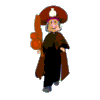
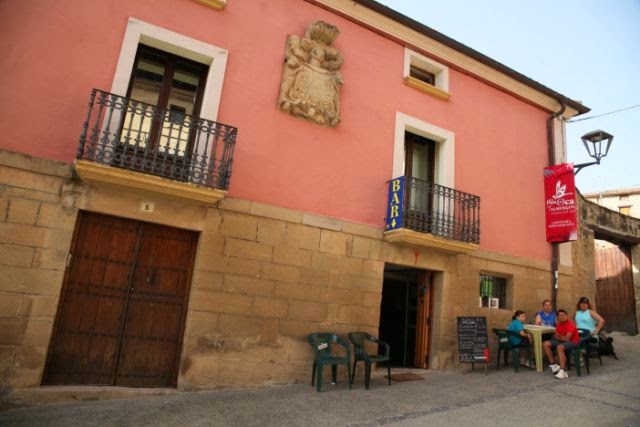

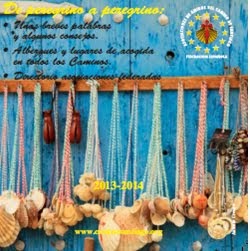


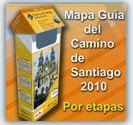
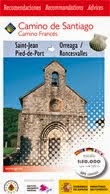







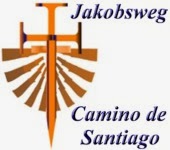
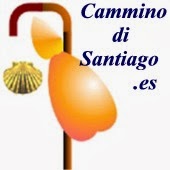



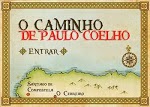


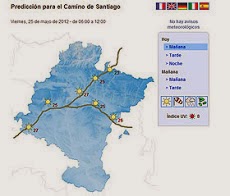









![corriente_agua_mediana[1]](http://haciasantiagojmfanjul.files.wordpress.com/2014/04/corriente_agua_mediana1.jpg?w=300&h=198)
![moros-1024x768[1]](http://haciasantiagojmfanjul.files.wordpress.com/2014/04/moros-1024x7681.jpg?w=300&h=225)
